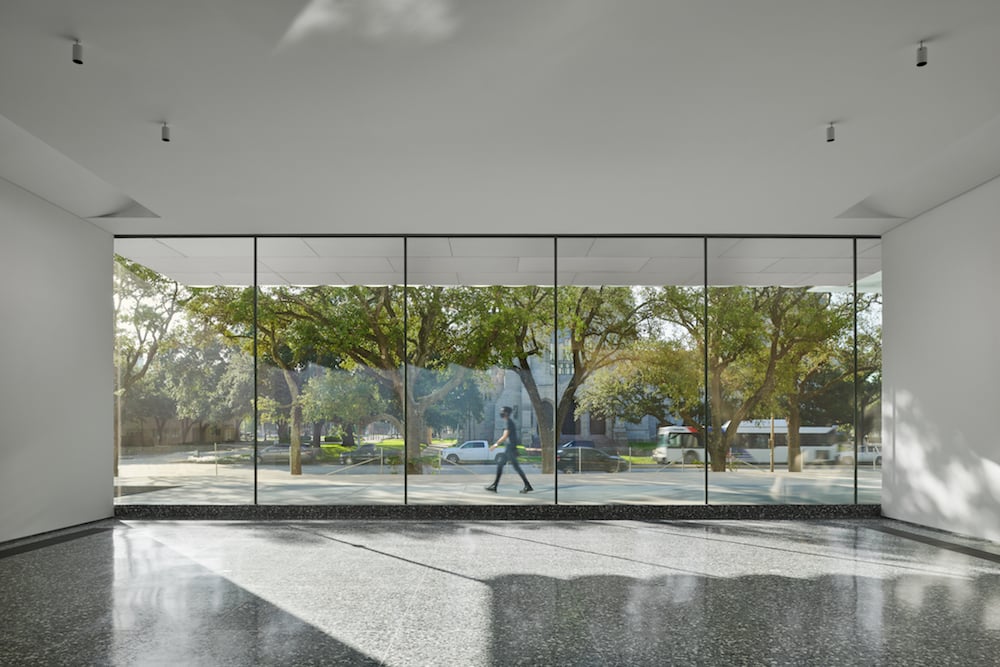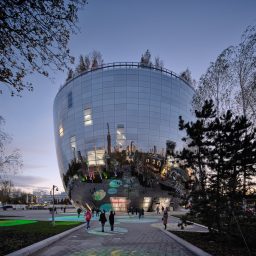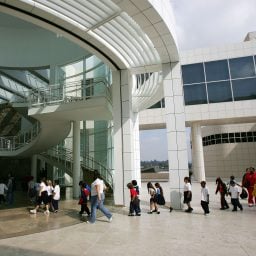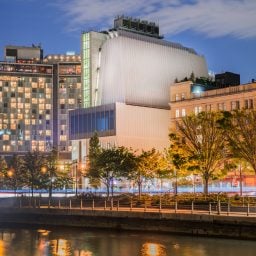Before the shutdown hit New York City museums in March, 70 percent of the Metropolitan Museum of Art’s visitors traveled to it from other cities and countries. Now, since the museum’s August 29 reopening, that number has dwindled to just 20 percent, leading the Met, and institutions across the globe, to grapple for the first time with what it means to run a museum without tourists.
As social distancing shrinks visitor capacities, ticket sales are down and museums are feeling the financial hit. They are also having to retool programming for their newly local audiences.
Before the shutdown, the Met welcomed anywhere from 15,000 visitors to 25,000 (on a peak summer day). Now, capacity is 14,000, and the Met is currently using its timed ticketing system to generate audiences of about 5,000 visitors per day.
With loans and traveling shows curtailed, the museum will be relying heavily on its own collection to create exhibitions, Met director Max Hollein said. Overall, programming will be sharply reduced for the next 17 to 24 months, prompting the museum to explore “new juxtapositions and new ways of contextualizing objects” in its collection, said Hollein.
The museum’s current 150th anniversary exhibition, “Making the Met 1870-2020,” was already in the works long before the current crisis, but it’s nonetheless a good example of the kind of show that can be done from drawing on the museum’s own resources.
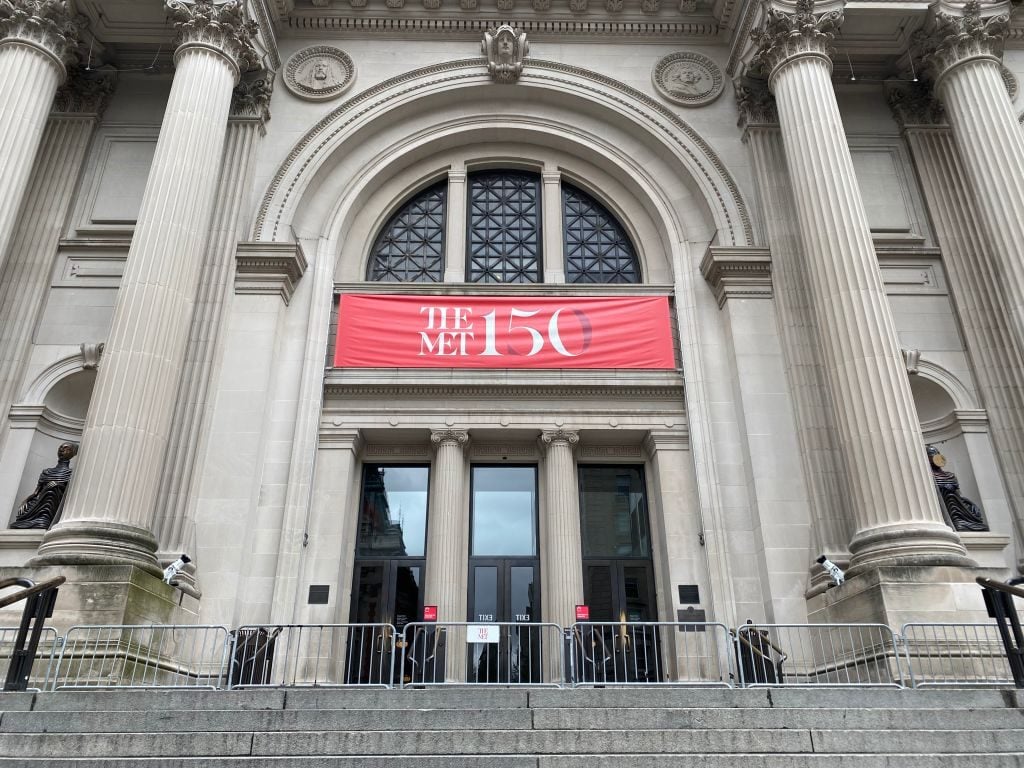
A view of the Metropolitan Museum of Art in April. Photo by Rob Kim/Getty Images.
“We also became more local in the lockdown,” Hollein said. “We’re focusing on what we have to energize and galvanize us in that direction.” To that end, the museum is adding a modern spin to its “period rooms” display that represents a “local” New York story. Details about the new installation will be revealed in coming months, but, for now, “It’s time we start to imagine a period room not of the past but of today that can reflect our current time and challenge contemporary issues,” Hollein said.
Hollein expects that it could be two to three years before tourism approaches its pre-pandemic levels. “The local audience is really the central audience,” he said. “It’s an audience that has grown up with the institution and comes to you again and again. They have a much closer connection because they enjoy and notice constant changes within the institution. Their level of expectation is higher,” than, for example, a tourist who comes once every few years.
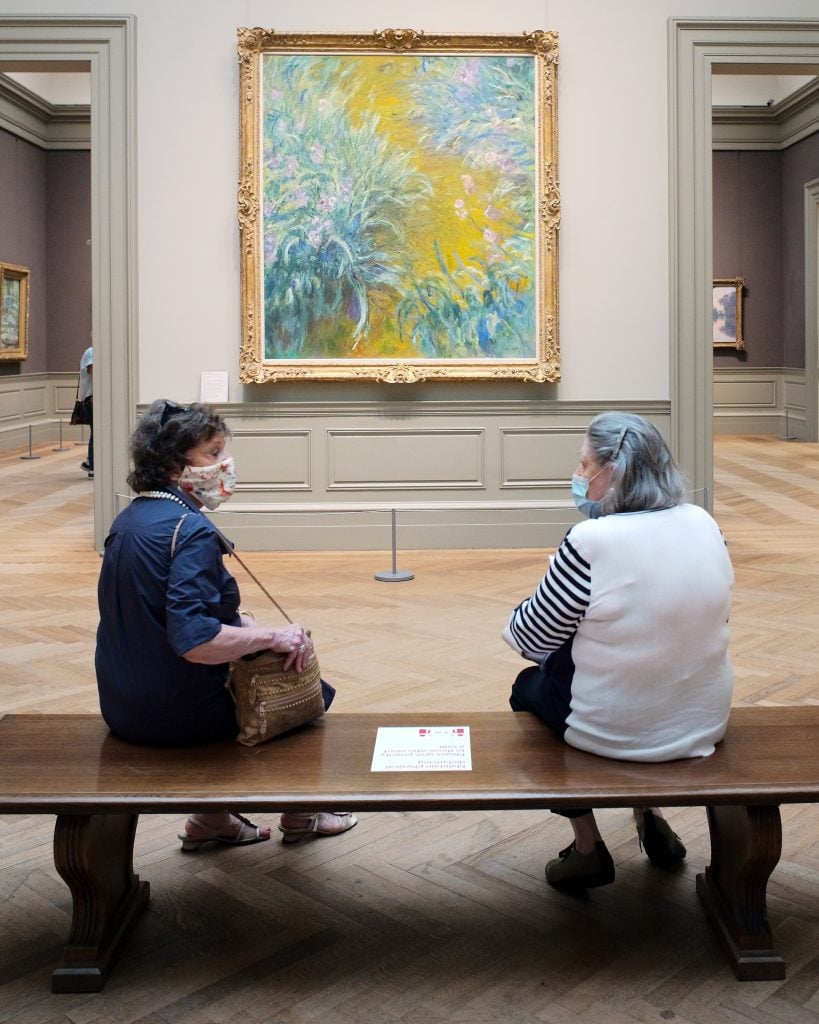
Two friends in face masks sit in front of Claude Monet’s paintings at the Metropolitan Museum of Art during its first day open to members since March on August 27, 2020. Photo by Taylor Hill/Getty Images.
How Exhibitions Are Changing
It appears the Met has plenty of company on this path. In June, Vastari, a digital platform that helps arts and cultural institutions source individual objects or entire exhibitions from peer institutions and private collectors, conducted a multiple-choice survey with its members about programming strategy through the end of 2021.
The majority of the 50 respondents were art museums, and 26 of them were based in the US. From this cohort, 52 percent replied that they would focus on organizing shows with their own permanent collections. Another 38 percent said budget restrictions would compel them to book only small exhibitions. Among the museums who responded “other” to the question, the most frequent explanation written in was an intent to focus on their local audiences.
Vastari CEO Bernadine Bröcker Wieder told Artnet News that activity on the platform in the months since the survey has reinforced its findings. Although a few major institutions are planning to move ahead with blockbuster shows under the belief that they can still tempt sufficiently large—yet still socially distant—crowds from a newly local pool of potential visitors, others are pivoting to “more modular” programming: smaller, nimbler shows devised to directly engage the communities in their immediate surroundings.
Rather than hire whole touring exhibitions on Vastari, many institutions are now interested in paying for “just a few objects from another museum that they can build a marketing campaign around,” says Bröcker Wieder. “They still get the draw of a big touring show without the cost of a big touring show.”
Vastari is even in the midst of changing its policies and capabilities in response. Prior to the shutdown, the platform only allowed member institutions to offer complete exhibitions to other member institutions, while private collectors could offer individual objects for show. But it is now working to give museums the same flexibility to hire out as little as a single work to their peers—a practical acknowledgment of the new normal’s shifting priorities.
“It’s not tourism versus local, in many cases it’s audience versus curatorial interest,” said Adrian Ellis, founder of AEA Consulting, which tracks spending and strategy in the cultural industries. The financial pressure of the past few months “will lead to a more considered approach to programming generally, driven more on balance by considerations of audience than curatorial agendas.”
Striking that balance is not exactly a new phenomenon, but Ellis predicts it will likely “tip toward market and toward cost consciousness.” As a result, small exhibitions that draw more heavily on permanent collections and less on borrowed objects may become more frequent. “There will also of course be exhibitions exploring the current ‘moment’—and our national preoccupations with race and social justice will clearly affect thinking about exhibitions. There will be continuing efforts to broaden audience demographics,” he says.
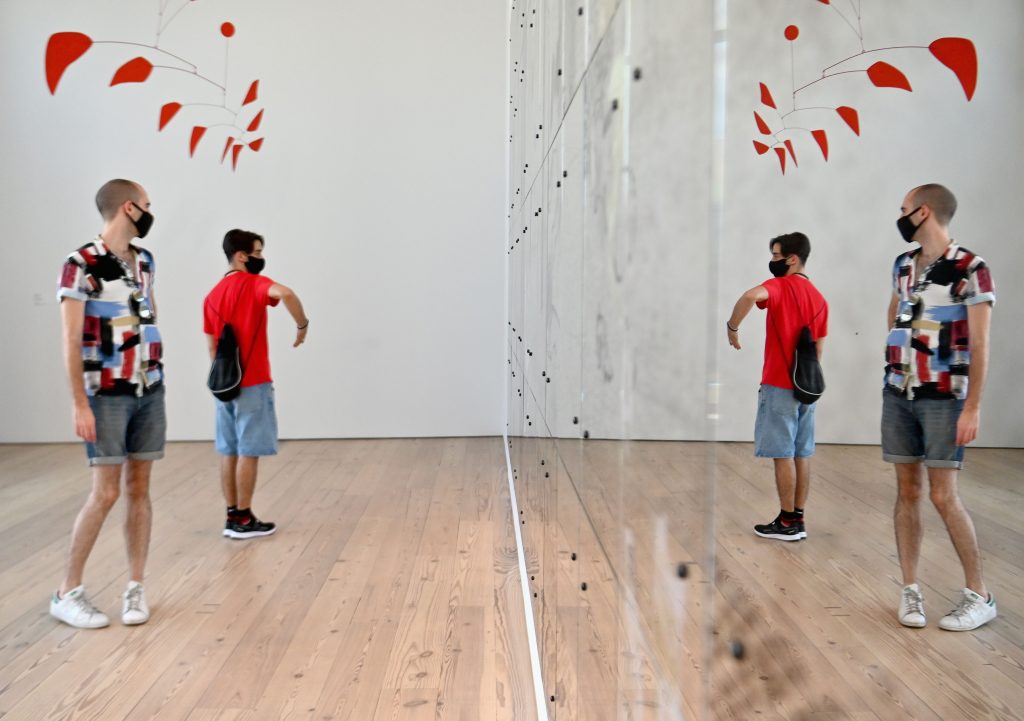
Visitors walk through an exhibition at the newly reopened Whitney Museum. Photo by Angela Weiss/AFP via Getty Images.
Of course the situation is different for each institution. The Whitney Museum, like the Met, says the overwhelming majority of visitors are New Yorkers. The museum reopened with a month of pay-what-you-wish admission to welcome back New Yorkers while engaging and supporting the local community. Notably, it is one of the few museums that has not yet had a major disruption in programming. It was able to keep exhibitions on view that were installed before the shutdown, including “Vida Americana: Mexican Muralists Remake American Art, 1925–1945,” “Cauleen Smith: Mutualities,” and “Agnes Pelton: Desert Transcendentalist,” as well as its two collection installations which were on view prior to the museum’s closure.
“We kept these shows installed for the duration of the closure so that they would be on view to welcome visitors back following the reopening,” said a museum representative, adding that previously planned exhibitions remain on the schedule as well. “Our programming has not been impacted by the shift in visitor composition.”
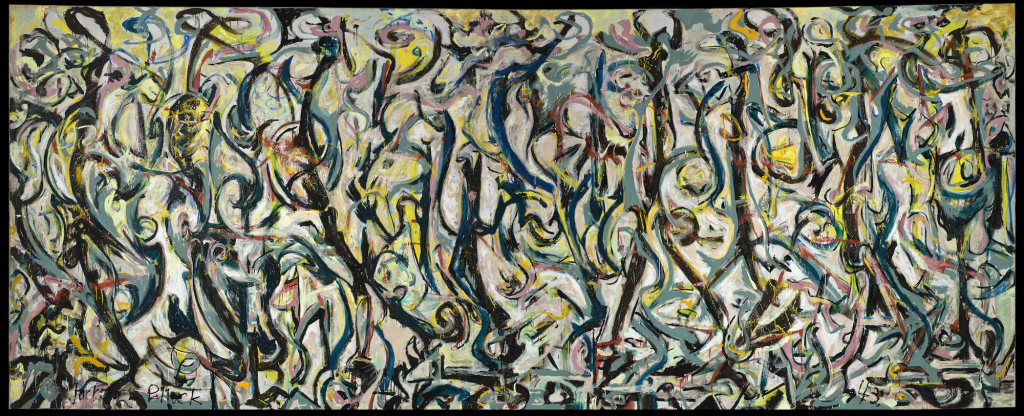
Jackson Pollock, Mural (1943). University of Iowa Stanley Museum of Art, Gift of Peggy Guggenheim, 1959.6 © 2020 The Pollock-Krasner Foundation/Artists Rights Society (ARS), New York.
A Tale of (More Than) Two Cities
Another emergent trend in the museum sector’s new normal is geographic disparity. The nation’s disjointed public-health response to the coronavirus has left the most popular institutions on the East Coast in vastly friendlier scenarios than their counterparts on the West Coast.
When the Guggenheim Museum reopens on October 3 with new exhibitions of Jackson Pollock’s famed Mural (1943) and related sculptures, all of New York’s flagship arts institutions will once again be operational. Caveats apply, of course. According to a Guggenheim spokesperson, the museum will only accommodate a quarter of its normal capacity, with timed tickets and observance of other safety measures required. The Guggenheim also anticipates a 25 percent year-over-year decline in overall attendance in 2020, meaning the institution would host only about 900,000 total visitors by year’s end versus roughly 1.2 million in 2019.
The composition of its audience will also change substantially. Annual visitorship at the museum typically breaks down as roughly half international and half domestic, with nearly 40 percent of US visitors (meaning about 20 percent of all visitors) being New Yorkers. Although the museum does not have a projection for how much more of its overall attendance locals will comprise, it is safe to say that this year will deviate from the usual demographic trend. The Guggenheim is adjusting its communications strategy accordingly by featuring content “aimed towards New York audiences” on its social-media and digital platforms, the spokesperson said.
This approach harmonizes with the one already in practice at the Art Institute of Chicago. Since reopening on July 30, three-quarters of visitors to the encyclopedic museum have been local residents, according to a representative. Normally, this constituency makes up only about 50 percent of attendees. The Art Institute has responded by eliminating advertising targeted to tourists “for the time being,” as well as shifting the emphasis further toward the “Chicago” element of the campaigns for its current exhibition “Monet and Chicago.” The show’s layout was also modified during the shutdown to optimize traffic flow through the galleries for a socially distanced world.
While the wildly popular art museums above undoubtedly wish their situations were better, their peer institutions in the west would likely love to have the same problems. The Getty Center and the Getty Villa will not welcome visitors until January 2021, according to a spokesperson. A representative for the Los Angeles County Museum of Art, whose website simply designates the campus as “temporarily closed” amid the pandemic and its controversial architectural overhaul, declined to comment for this story. Multiple email inquiries to the Museum of Contemporary Art Los Angeles went unanswered; also “temporarily closed,” the institution is scheduled to debut two new major exhibitions in October, but as of publication time, opening dates had yet to be announced.
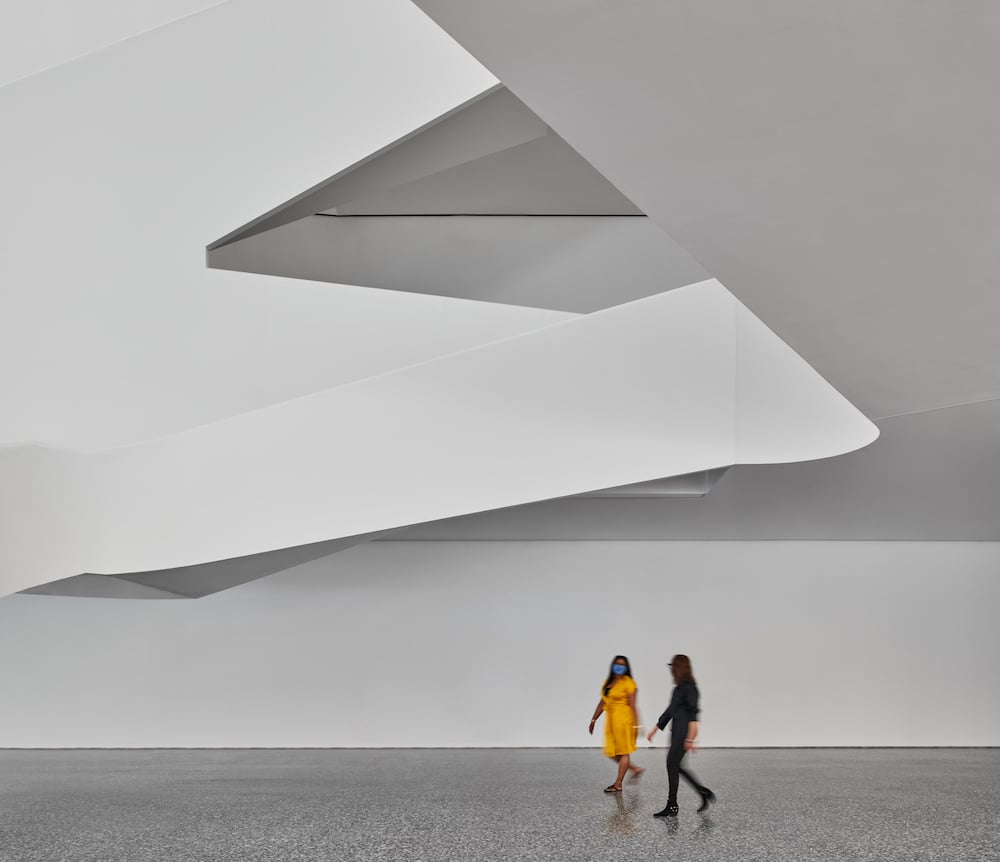
The atrium of the new Kinder Building at the Museum of Fine Arts, Houston. Photo by Peter Molick, courtesy of MFAH.
Searching for a New Normal
To the extent that any institution can operate as it did pre-shutdown, the Museum of Fine Arts, Houston has been remarkably consistent. It reopened to the public a full three months ahead of most New York institutions, on May 23. The date set by museum leaders followed three weeks after that set by the state’s governor for museums to reopen.
Social distancing protocols are in place, including mask requirements, and timed ticket entries, and the museum is currently operating below 25 percent capacity, which is 900 visitors across the 14-acre main campus. A representative said the museum does not expect programming to be impacted as “90 percent of our audience has been and continues to be from the greater Houston area.”
One pandemic-related delay is the opening of its new Nancy and Rich Kinder Building, now set for November 21, about three weeks delayed. The Kinder Building will present works from the museum’s international collections of modern and contemporary art, opening with the first comprehensive installation drawn from the collections of Latin American and Latino art.
Still the Houston museum’s experience remains an outlier at this stage. As the conditions on the ground continue to evolve in the months ahead, the only certainty is that arts institutions will need to keep their creative problem-solving skills sharp. The crisis and its effect on the museum-going public have already forced several of the US’s best-attended public collections to reappraise everything from programming, to communications, to operations. And as Bröcker Wieder of Vastari sees it, in some cases this soul-searching was overdue.
“I grew up in a country with a lot of hurricanes,” she says. “After a hurricane, everything is chopped down. Maybe this is time for a spring cleaning in museums.”
